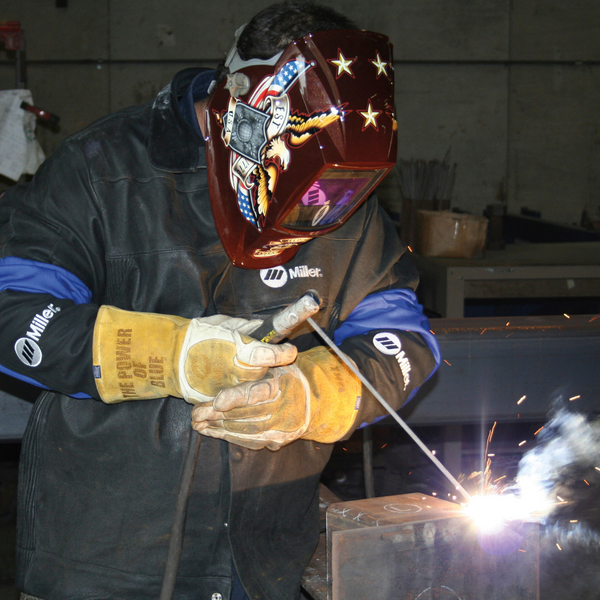Consumable Electrode Rods drive the Stick Welding process – these skinny little stick-like rods are the real power behind the most versatile, portable and effective welding process.

But how do you pick the right electrode for your particular welding project?
This is an incredibly important question, because there are literally hundreds of electrodes to choose from – each with its own unique properties, all of which have an impact on their effectiveness in relationship to your welding project – making your electrode selection a very important part of the stick welding process.
So, the first part of answering the electrode selection question begins with determining the parameters of the welding project at hand. To begin with, you need to ascertain the following information as it relates to your welding project:
- Welding speed
- Power supply
- Position of the weld
- Type of metal
- Thickness of the metal
Welding Speed
Welding speed depends largely on the shielding gas, heat transfer properties, oxidation and metal transfer characteristics. An electrode’s flux coating determines the composition of the shielding gas, which in turn affects oxidation, as well as heat and metal transfer. To achieve maximum welding speeds, you need an electrode that oxidizes quickly to ensure fast weld solidification.
Power Supply
Most electrodes are designed to work with either AC (Alternating Current) or DC (Direct Current) power sources, and some electrodes are designed to work with both AC or DC current. The type of electrical current involved in the welding process affects the level of penetration into the base metal, with AC current generally achieving deeper penetration.
Position of the Weld
Are you welding on a flat workbench in a welding shop? Are you welding overhead or in a straight-up-and-down position, as you might in an industrial setting or while making field repairs? Some electrodes are designed to weld in only one of the positions referenced above, while other electrodes are actually designed to work effectively in all positions.
Type of Metal
An electrode’s filler metal should match the base metal used in your project.
Thickness of the Metal
The thicker the metal, the stronger the weld’s tensile strength should be, and the deeper the penetration required to effectively bond the filler metal with the base metal.
Matching Up the Right Electrode with Your Welding Project
Now that you’ve defined your project parameters, it’s time to go find the right electrode. But how do you match your electrode with your welding project's requirements?
The American Welding Society’s (AWS) swoops in to the rescue with their electrode numbering system.
Electrodes are assigned a four to six digit number which corresponds to their specific properties, e.g., the tensile strength, weld position, power supply and penetration.
The Old Standards
Many seasoned welding veterans and welding instructors alike recommend certain electrodes, due to these electrodes versatility and general ease of use, as go-to options for a wide variety of welding projects.
The No-Brainer Electrode Options Include:
- 6010
- 6013
- 7018
While these electrodes are incredibly flexible, don’t end your search here, because as this post illustrates, there are a number of very important factors to consider when selecting the right electrode for your welding project.
Additional Electrode Resources
To learn more about the electrode selection, including an electrode's affect on the formation and physical appearance of a weld, check out Miller Welding’s article on selecting the right electrode.
